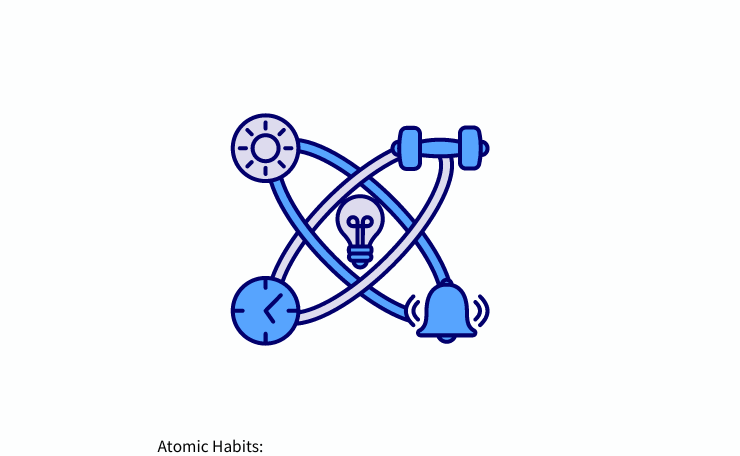Habits are powerful drivers of behaviour that influence our daily lives significantly. Understanding how they form and how to break them can help us make positive changes and achieve our health goals.
We all have habits, and they can either positively or negatively impact our health. Habits have consistency and automatic characteristics like brushing your teeth every evening, drinking water with meals, checking your phone first thing in the morning etc.
But knowing how they are formed and broken is a good place to start.
Let’s take a closer look at the science behind habit formation and breaking.
How Habits Form
Habits are formed through repeated actions, reinforcing neural pathways, and creating automatic behaviours. Consistent practice and rewards strengthen these neural connections over time.
You can break habits by disrupting routines, replacing them with new behaviours, altering triggers, and consistently practising new patterns to weaken old neural pathways.
1. Repeated Actions:
- Habits are formed through repetition. When we act consistently, our brain starts recognising the pattern and automating the behaviour.
2. Reinforcing Neural Pathways:
- Each time we repeat a behaviour, the neural pathways associated with that action become stronger. This process, known as neuroplasticity, is the brain’s way of adapting to new experiences and learning new skills.
3. Creating Automatic Behaviors:
- Over time, repeated actions become automatic. This means that the behaviour can be triggered without conscious thought, making it a habit.
4. Consistent Practice and Rewards:
- Consistency is key in habit formation. Regular practice of a behaviour reinforces the neural connections in the brain.
- Rewards play a crucial role in this process. Positive reinforcement, such as feeling good after a workout or enjoying a treat after completing a task, strengthens the habit loop by making the behaviour more appealing.
Example: Forming a Habit of Regular Exercise

- Action: Going for a run every morning.
- Neural Pathway: Repeatedly lacing up shoes and hitting the pavement strengthens the connection between the intention to exercise and doing it.
- Automatic Behavior: Over time, waking up and going for a run becomes an automatic part of the morning routine.
- Reward: Experiencing the endorphin rush and a sense of accomplishment after the run reinforces the desire to continue this habit.
Breaking Habits
1. Disrupting Routines:
- Breaking a habit requires disrupting the established routine. This means consciously intervening in the automatic behaviour pattern.
2. Replacing with New Behaviors:
- Instead of simply trying to stop the old habit, replacing it with a new, healthier behaviour is more effective. This creates a new neural pathway that can override the old one.
3. Altering Triggers:
- Habits are often triggered by specific cues, which can include environmental factors, certain times of day, emotional states, or social situations. Identifying and altering these triggers can help in breaking the habit.
- For example, if stress triggers unhealthy snacking, finding alternative stress-relief methods like meditation or a quick walk can help break the habit. Altering triggers is a powerful long-term strategy for breaking unwanted habits quickly.
4. Consistent Practice of New Patterns:
- Consistently practising the new behaviour is also crucial to weakening the old neural pathways and strengthening the new ones. Over time, the new behaviour can become automatic, replacing the old habit. Remember that even small, consistent changes are an important part of this process.
Example: Breaking a Habit of Unhealthy Snacking
- Disrupting Routine: Removing all unhealthy snacks from the home.
- New Behavior: Replacing snacking with drinking water or eating fruit.
- Altering Triggers: Identifying stress as a trigger and implementing stress-reduction techniques like deep breathing or a brief walk.
- Consistent Practice: Regularly choosing healthier alternatives and stress-relief methods to weaken the old habit of unhealthy snacking.
In Summary
Forming Habits:
- Repeated Actions: Consistently performing a behavior.
- Reinforcing Neural Pathways: Strengthening connections in the brain.
- Automatic Behaviors: Creating habits that run on autopilot.
- Practice and Rewards: Reinforcing the habit loop with positive outcomes.
Breaking Habits:
- Disrupting Routines: Interrupting the automatic behavior pattern.
- Replacing Behaviors: Introducing new, healthier actions.
- Altering Triggers: Identifying and changing habit cues.
- Consistent Practice: Repeatedly practising new behaviours to establish new neural pathways.
Understanding these principles can empower you to create positive habits and break unwanted ones, ultimately leading to a healthier and more fulfilling life. There are simplified ways you can break bad habits read our blog steps to break bad habits
Are you ready to work on your habits and transform your life?
 A Health and Wellness coach specialising in building habits, mindset, and holistic weight loss. I love helping people come up with solutions that work for them for long-term weight loss.
A Health and Wellness coach specialising in building habits, mindset, and holistic weight loss. I love helping people come up with solutions that work for them for long-term weight loss.
I will help you develop sustainable habits and empowering mindsets that ensure you lose weight and keep it off for good.
Our coaching programs are comprehensive, all-in-one solutions that address habits and mindsets, offering holistic weight loss and personal coaching to provide you with everything you need to transform your life.
- knowledge
- systems
- tools
- skills
- structure
- accountability
and support to help you achieve lasting weight loss, so you can reclaim your freedom, enhance your vitality, and improve your quality of life.
Ready to transform your life? Take the first step towards a healthier, happier you!





